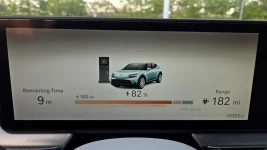In many cases, you are right. A lot of people can get by with an L1 charger.
But what works best will depend on several variables. Number of electric cars, average number of miles driven during the day, number of hours available to charge, and amperage rating of the circuit being used for example.
I think a typical garage outlet is most likely a 15 amp circuit, but some houses may only be on a 10 amp circuit. Assuming 120 volts, that means as much as 1.44 kw or as little as .96 kw available. Assuming the car efficiency is between 3 and 3.5 miles/kw (4.8 - 5.6 kilometers/kw), that means an owner could add about 3 to 5 miles (5 to 8 kilometers) of range/hour. And assuming the car can be plugged in for 10 to 12 hours overnight, then if an owner drives less than 30 to 60 miles/day, then yes, they can likely get by with an L1 charge rate... in the summer. Winter would likely be limited to 20 to 40 miles/day.
Drive more miles than can be replenished overnight at that rate and an L2 charger sure comes in handy. Some of us don't get the free L3 charging because we got our cars after February of this year. And even if an owner does get the free charging, there is the convenience factor of not needing to stop at an L3 charger on the way home, let alone if there is a line waiting to get on the charger. And that free charging only applies to EA. No EA charger along the route home? More hassle.
I prefer to keep my L1 charger in the car for that emergency situation that will likely never happen. If an owner uses the L1 charger that came with the car, they have two choices: either take the cable out every night and put it back in the car every morning, or leave it at home so they don't have it with them.
Each owner will have to evaluate their situation to determine if installing an L2 charger is worth it.







